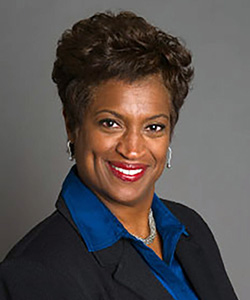By Melissa B. Donaldson

As a diversity and inclusion strategist for more than a decade, I’ve noticed a number of subtle and not-so-subtle changes in the profession over the years—some disconcerting, some encouraging, and some, frankly, confusing. One change that encompasses all three of these reactions, in one way or another, is the insertion of the word equity in the titles of many practitioners. It is encouraging because it elevates an important distinction in the work. It is disconcerting due to the confusion that arises in the minds of listeners. Full disclosure, equity is not part of any title I have held while leading this work. However, it is definitely something I am absolutely committed to as a byproduct of my efforts. Equity or bust is my aim. Here’s why it should be yours, too.
What exactly does equity mean? Equity often gets confused with equality. Equity is defined by Merriam-Webster as “justice according to natural law or right; specifically freedom from bias or favoritism.” Merriam-Webster defines equality as “the quality or state of being equal.” Equity speaks to justice. Equality speaks to a state of being, well, equal.
Pardon some bottom-lining here from a non-lawyer: Equality is afforded to human beings by Constitutional law to guarantee individuals equal opportunity void of discrimination—equal opportunities for access to education, to public places, and to housing, food and protection; and yes, equal opportunities for employment, which should be upheld regardless of whether a diversity and inclusion office exists.
Equity is not guaranteed by any doctrine or law. It comes by way of a personal or organizational commitment to giving individuals their due, presuming all prerequisites, such as educational achievement, technical preparation, and consistency of accomplishments, are met. Such a commitment should essentially justify upward mobility unencumbered by bias or favoritism. Personal dimensions of diversity, such as gender, race, ethnicity, alma mater, accent, hairstyle, physical ability, or creed, should not be a deterrent to career growth or promotions. What matters most is an objective assessment of performance and potential. Yet oftentimes, objectivity is defeated by bias and harmful favoritism. Inclusion mission, aborted.
The formal emphasis on equity (e.g., the establishment of Offices of Diversity, Equity, and Inclusion) is indeed encouraging. However, it is important to understand the distinctions between equality and equity, both for practitioners and clients. When “in-equity” goes unchecked, it is harmful to the credibility of your practice and your employer’s reputation. It is critical to be vigilant regarding both outcomes. Diversity takes commitment. Inclusion requires intention. Equity demands vigilance and action. The most lucrative, beautifully architected diversity and inclusion strategy will fall victim to an environmental toxicity fueled by unchecked bias (conscious or unconscious), and negative treatment— aka, “in-equity.” Benjamin Franklin once said, “Justice will not be served until those who are unaffected are as outraged as those who are.” Now that we’ve labeled it, we must combat it.
So what can we all do to elevate equity? Here are three things to consider:
- Realize that words matter.
- Pay attention to language and word choices.
- Disallow the use of the word diverse as an all-encompassing label for the organizationally underrepresented.
Identifying someone as a diverse candidate, diverse employee, diverse customer, or diverse hire screams, “You are not my equal so I must treat you differently.” It also green-lights both inequity and inequality. When these phrases are uttered, simply ask the speaker to be more specific as to whom they are referring. Offer gentle assistance if they appear uncomfortable when responding.
Ask more questions, and challenge your assumptions. How well are interventions working? What’s the impact on promotion rates? Stay curious. Periodically check in to see how groups within the workforce are fairing—particularly targeted women and professionals of color in challenging departments. Try to stay abreast of their progress and any unusual career stall outs. Check in with their managers, too. Remember the message repeated in airports all over the country, “If you see something, say something.” Bias and favoritism can be masked, so open communication is important. Take your suspicions to someone knowledgeable who can help connect the dots if you believe there is cause for alarm. Carefully consider all stakeholders when considering options. Be an advocate, not a vigilantly.
Learn more about more people. Hear their stories. Find out if there have been instances in which they felt victimized by the two-headed bias-favoritism monster. How were they affected? How did their stories impact you? What did you learn? What surprised you? Listen for patterns across the workforce. Discreetly take any worrisome insights to your up-line, and begin crafting interventions. Senior leaders cannot address what they do not know about. The more aware you are of how pervasive inequity is, the more you can help your firm mitigate potential risks.
Equity is about justice and fair treatment. It is not necessary to add equity to titles to direct our efforts. Measuring programmatic outcomes and trusting our instincts regarding foul play will be our keys to success. The workforce and the workplace are depending on us to get this right.

Melissa B. Donaldson
Melissa B. Donaldson is an executive diversity and inclusion strategist with more than thirteen years as a corporate practitioner. She has worked in multiple industries, including retail, technology, and financial services, where she currently serves as a chief diversity officer. A writer, speaker, facilitator, and adjunct graduate school instructor, Donaldson is an alum of Wright State University, Central Michigan University, and Northwestern University.






